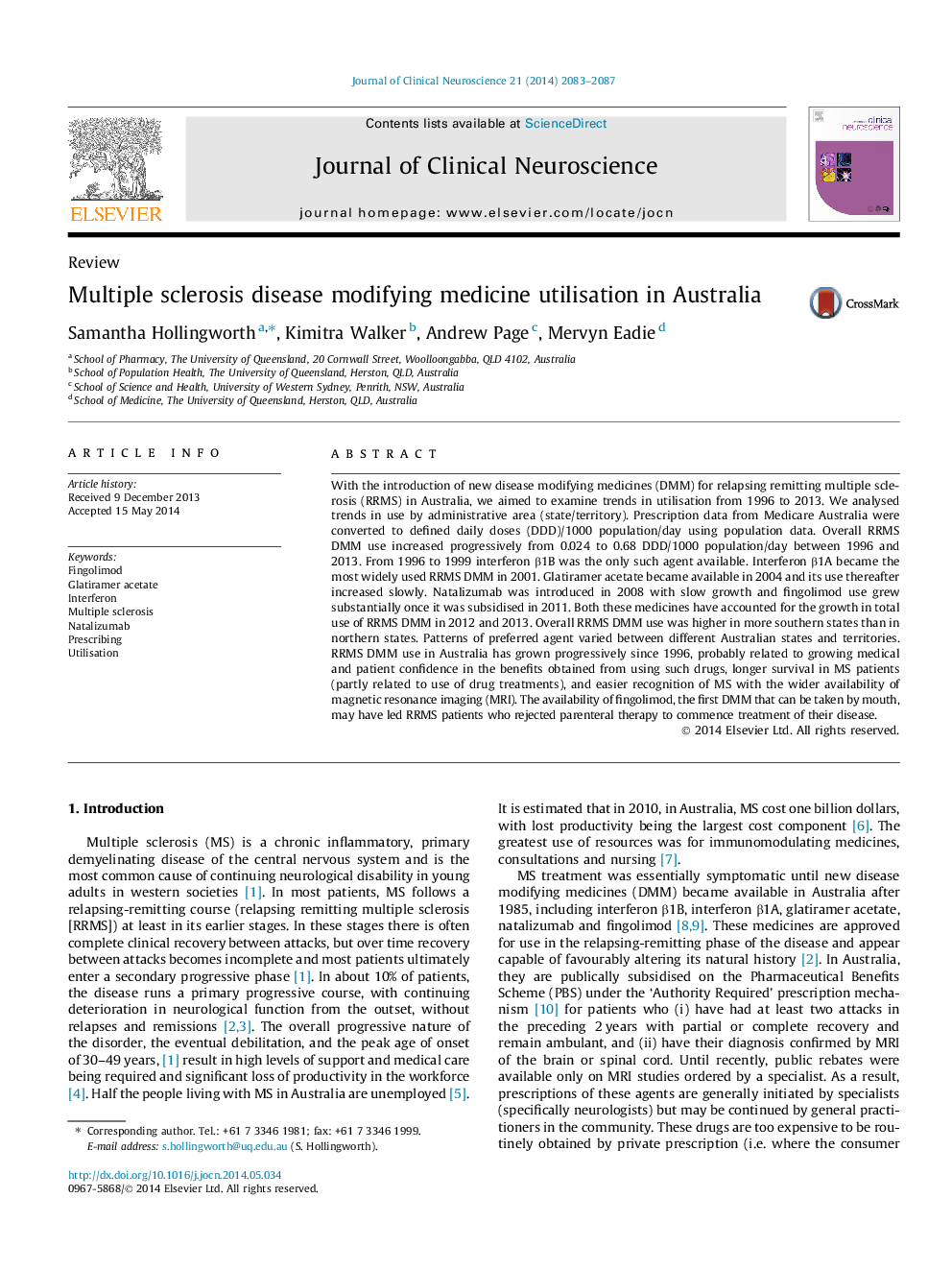| کد مقاله | کد نشریه | سال انتشار | مقاله انگلیسی | نسخه تمام متن |
|---|---|---|---|---|
| 3058578 | 1187409 | 2014 | 5 صفحه PDF | دانلود رایگان |
With the introduction of new disease modifying medicines (DMM) for relapsing remitting multiple sclerosis (RRMS) in Australia, we aimed to examine trends in utilisation from 1996 to 2013. We analysed trends in use by administrative area (state/territory). Prescription data from Medicare Australia were converted to defined daily doses (DDD)/1000 population/day using population data. Overall RRMS DMM use increased progressively from 0.024 to 0.68 DDD/1000 population/day between 1996 and 2013. From 1996 to 1999 interferon β1B was the only such agent available. Interferon β1A became the most widely used RRMS DMM in 2001. Glatiramer acetate became available in 2004 and its use thereafter increased slowly. Natalizumab was introduced in 2008 with slow growth and fingolimod use grew substantially once it was subsidised in 2011. Both these medicines have accounted for the growth in total use of RRMS DMM in 2012 and 2013. Overall RRMS DMM use was higher in more southern states than in northern states. Patterns of preferred agent varied between different Australian states and territories. RRMS DMM use in Australia has grown progressively since 1996, probably related to growing medical and patient confidence in the benefits obtained from using such drugs, longer survival in MS patients (partly related to use of drug treatments), and easier recognition of MS with the wider availability of magnetic resonance imaging (MRI). The availability of fingolimod, the first DMM that can be taken by mouth, may have led RRMS patients who rejected parenteral therapy to commence treatment of their disease.
Journal: Journal of Clinical Neuroscience - Volume 21, Issue 12, December 2014, Pages 2083–2087
